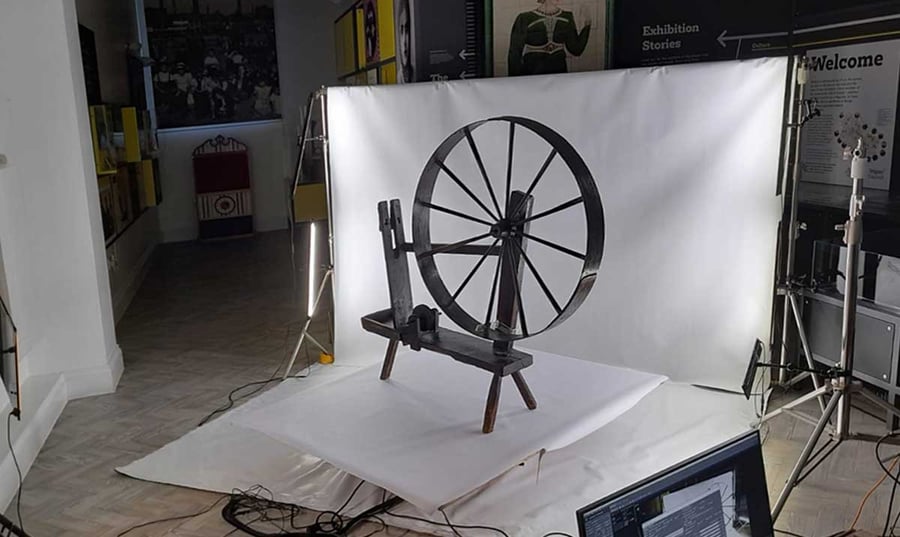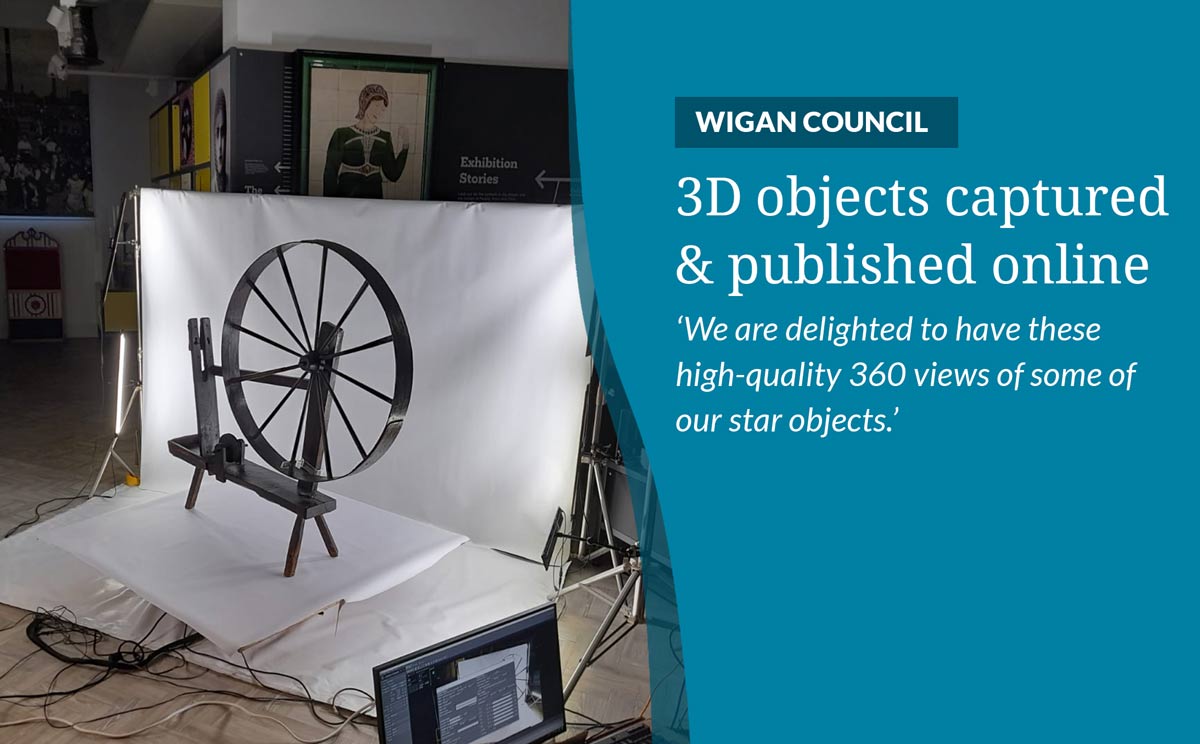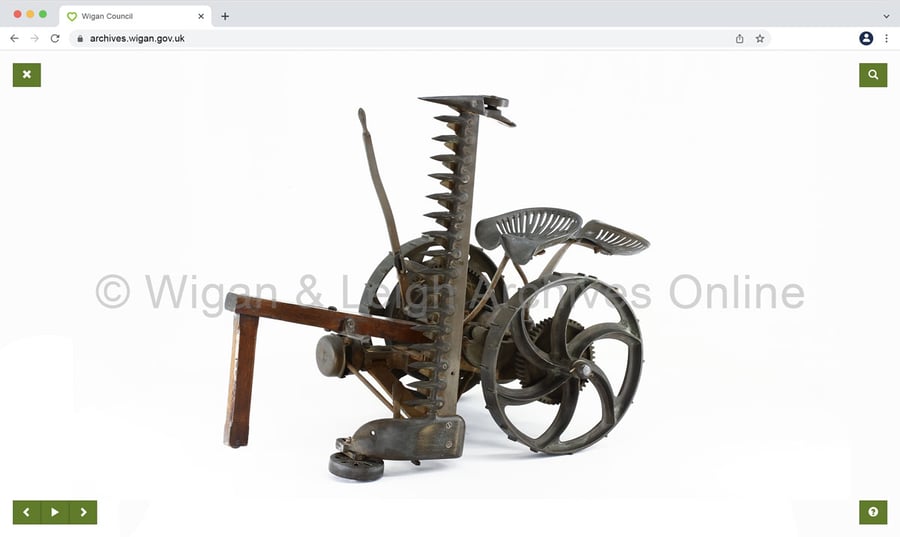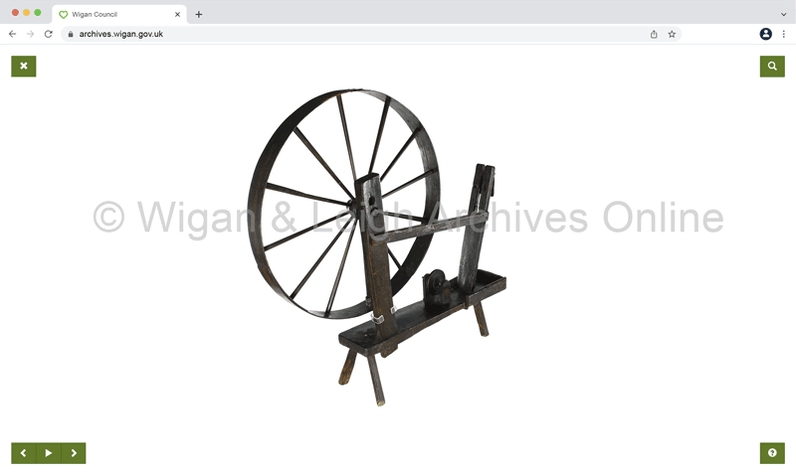Back in 2018, the ‘Revealing Wigan Archives’ project secured funding in the sum of £1.3 million from the National Lottery Heritage Fund to refurbish Leigh Town Hall and, ‘unlock the potential of Wigan Borough’s vast archive collection’.
A proportion of that funding was set to be used for outreach, which included the appointment of a dedicated outreach officer to work with local schools. Outreach work and the support of learning have always been a priority for Wigan & Leigh Archives, forming a big part of their overall mission.
Leigh Town Hall consists of a large archive store and an exhibition area. Being a public record office, they also contain public records for the county borough of Wigan going back 800 years. These include court and coroners’ records, maps, and an enormous digital photo collection, making Wigan & Leigh Archives uniquely positioned to support curriculum studies in history, design and technology, and citizenship.
The above led Wigan to consider TWA’s existing 3D object photography service, publishing their collection items through the PastView platform using Object Viewer. This would enable them to achieve the following goals:
- Outreach to support education and remote learning
- Widen access to exhibition objects
- Attract new audiences
- Aspire to build 3D objects into existing remote teaching resources
How 3D object photography is achieved
3D object photography uses a method called photogrammetry. After taking hundreds of photographs from multiple angles using specialist equipment, these are then processed by a computer program. The program analyses and triangulates the object's features from every single image. These are then used to construct a model of the object. The detail captured in each photograph is used to create a mesh and texture over the model, replicating the object's surface.
A turntable is used to rotate the 3D object as images of it are captured in high resolution. Software is used to calculate exactly how many photographs are required before moving the camera into its next position, repeating the process until the entire piece has been captured.
As with all archive items safety is a key concern. Consequently, the software can be programmed to move the turntable at a speed that ensures the object’s stability. The images are then combined using software to generate a 3D digital model.

Object scanning on site at the Wigan & Leigh Archives
3D object photography enables a wide range of objects to be captured from matchbox-sized items to furniture and costumes. As long as the object fits on the turntable, it can likely be captured. However, the more complex-shaped, glossy, or featureless the object, the more tricky it will be to scan. In these circumstances, LED lights and diffusion panels are used to soften and flatten the surfaces, removing as much reflection as possible. It is also possible to use a conservation-grade dulling spray, as a temporary measure. This works to dull the surface for long enough to complete the scanning process, leaving no residue.
We are delighted to have these high-quality 360 views of some of our star objects. This feature will be an excellent resource not only in increasing access to the collection both for our local visitors and those further afield but also in future preservation of these fragile objects allowing detailed access to the objects without physical contact.
Louisa Attaheri
Museums Lead
How 3D object photography can be used and published
Here are a few examples of the models that Wigan have captured with 3D object photography, and how they are currently being used:
Reaper binder model, created by Harrison, McGregor and Company, founded in 1872
This exhibition gives primary school pupils the opportunity to learn about the machine and the inventor, before going on to create their very own 'video exhibition'. To enhance this learning experience, there are plans to incorporate the 3D model into existing lesson plans, heightening interest, engagement, and interaction - watch this space!
The Spinning wheel, ‘Spirit of Innovation’
The ‘Spirit of Innovation’ project explores Leigh’s history using both the Spinning Wheel and the Reaper Binder to support digital learning and overcome barriers to access and discovery.
Thanks to the PastView publishing platform, you can explore Wigan’s 360 Museum Collection for yourself.
The real benefit of Object Viewer is in its capacity to share and make available items that are usually inaccessible to the visiting public. Wigan’s physical objects are kept on display but, in order to preserve and protect them, touching is discouraged. PastView’s Object Viewer overcomes barriers such as these by taking objects and allowing them to be spun and manipulated virtually, maintaining safe physical distances and enhancing existing exhibitions.
It is really easy to enable Object Viewer in PastView by simply uploading objects in-house and adjusting the settings. It is also possible to create sub-collections that can exist alongside each other, displaying the same object in different ways and adding a whole extra level of engagement.
Future plans for Wigan
There are no immediate plans for increasing the collection of 360 objects, particularly as the funding has now been utilised, but Wigan are constantly uploading photos to their PastView site. So there is always something new to access and discover! You can visit the Wigan & Leigh archive for yourself.






